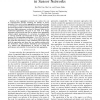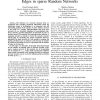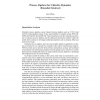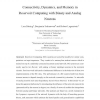113 search results - page 8 / 23 » Data structures with dynamical random transitions |
CGF
2008
13 years 10 months ago
2008
The evolution of dependencies in information hierarchies can be modeled by sequences of compound digraphs with edge weights. In this paper we present a novel approach to visualize...
INFOCOM
2006
IEEE
14 years 3 months ago
2006
IEEE
— Data aggregation protocols can reduce the cost of communication, thereby extending the lifetime of sensor networks. Prior work on data aggregation protocols has focused on tree...
BIOCOMP
2006
13 years 11 months ago
2006
Abstract-- The inference of a network structure from experimental data providing dynamical information about the underlying system of investigation is an important and still outsta...
MPC
2010
Springer
14 years 2 months ago
2010
Springer
d Abstract) Jane Hillston Laboratory for Foundations of Computer Science, The University of Edinburgh, Scotland Quantitative Analysis Stochastic process algebras extend classical p...
NECO
2010
13 years 8 months ago
2010
Abstract: Reservoir Computing (RC) systems are powerful models for online computations on input sequences. They consist of a memoryless readout neuron which is trained on top of a ...




